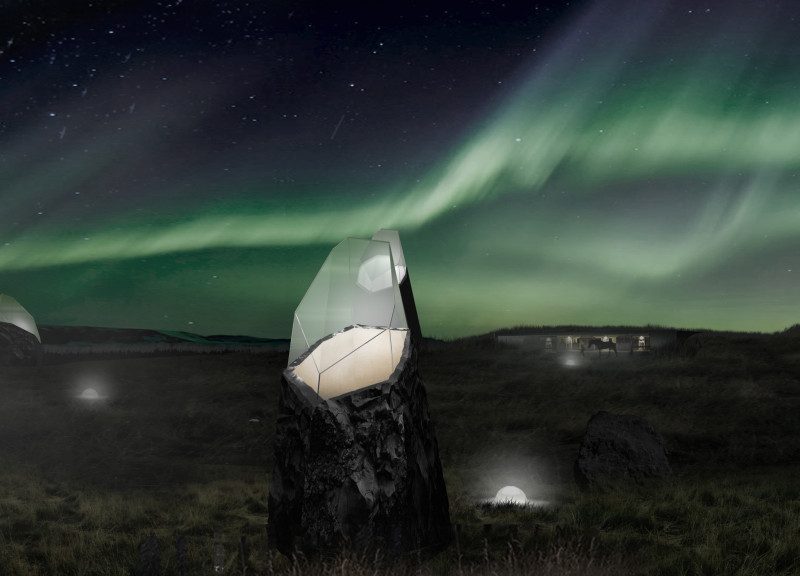5 key facts about this project
The design situated near Lake Mývatn explores the ideas of community, sustainability, and connection to the natural environment. It includes various facilities intended for both residential and communal use, such as barns for horses and guest houses. The overall concept focuses on accessibility and practical functionality, all while respecting the unique characteristics of the surrounding landscape.
Site Organization
The layout of the site prioritizes clarity in its organization. Different areas are designated for guest accommodations, communal spaces, and pathways for movement. A green roof is part of the design, enhancing the connection to nature while supporting local ecosystems. A rainwater tank is integrated into the design to provide cold drinking water, emphasizing environmental responsibility and resource management.
Energy Systems
Geothermal energy is a key component of the energy strategy. The project utilizes a geothermal pump along with a power generator and a battery loading station. This system promotes energy efficiency, supplying underfloor heating and a consistent hot water source. This approach aligns with the desire to address local climate challenges while minimizing energy consumption.
Community Engagement
The design includes features that encourage social interaction. Spaces such as the entrance hall, canteen, and kitchen are dedicated to bringing people together. Delivery and waste management areas are included, ensuring that operational needs do not disrupt the overall look and feel of the environment. Private living quarters for hosts are designed to be comfortable while remaining connected to the larger community setting.
Material Selection
Careful attention is paid to the choice of materials, specifically thermally insulated timber and rough obsidian slates. These selections enhance structure and durability, while also complementing the local environment. The detailing of these materials ensures that buildings harmonize with nature, providing both visual appeal and practical benefits for those who occupy the spaces.


























